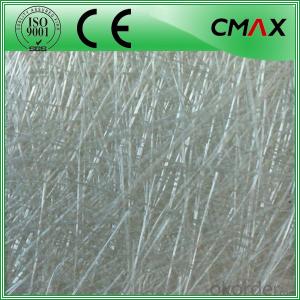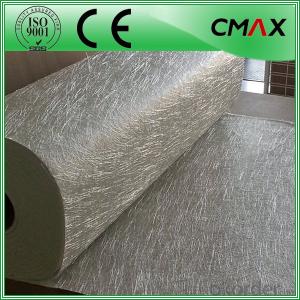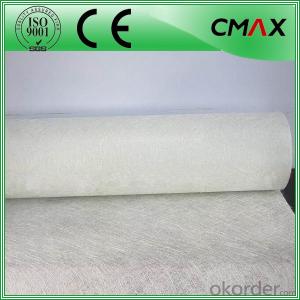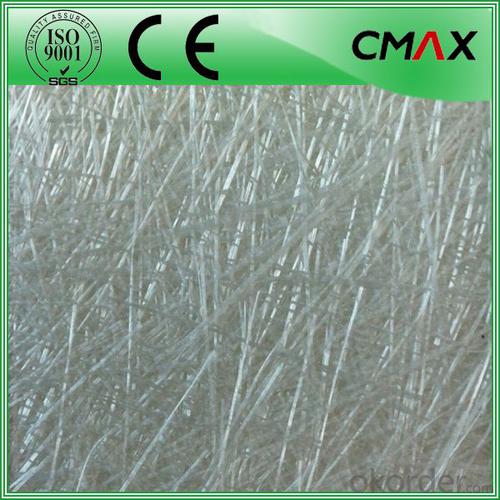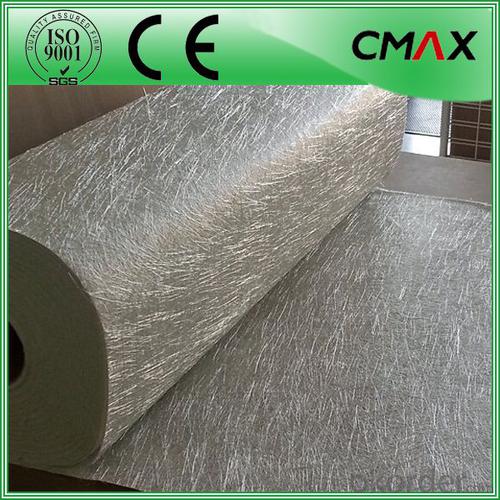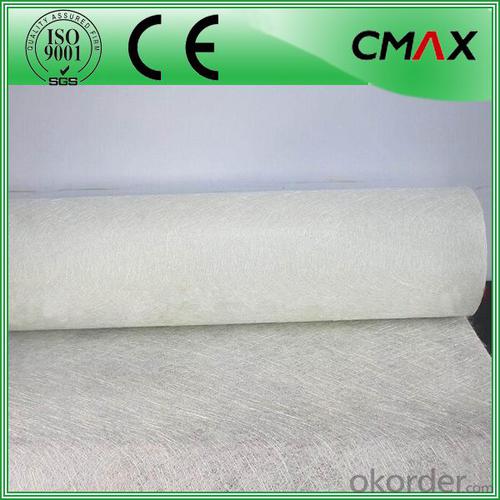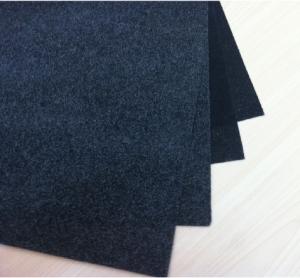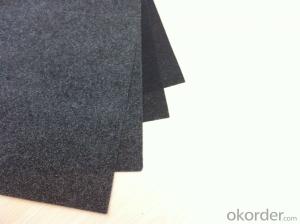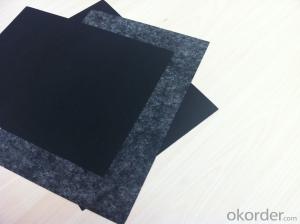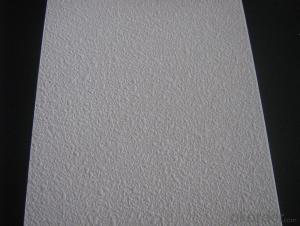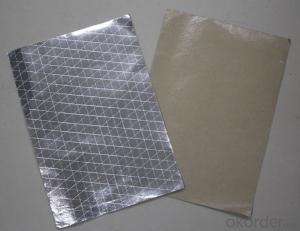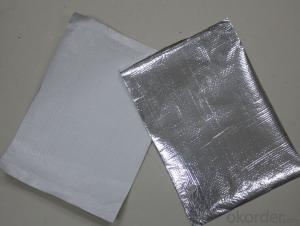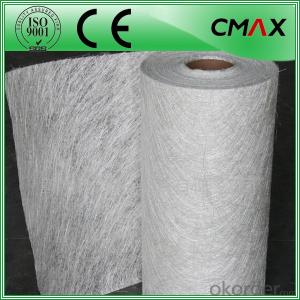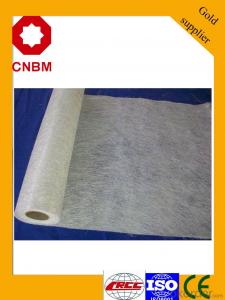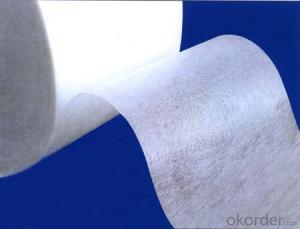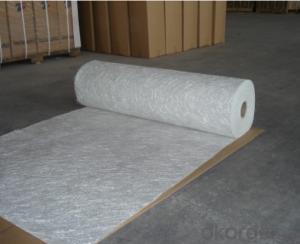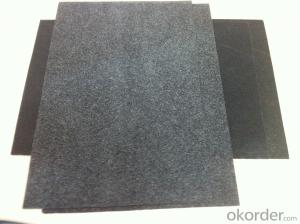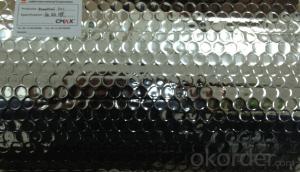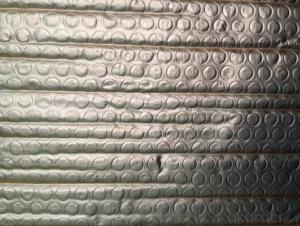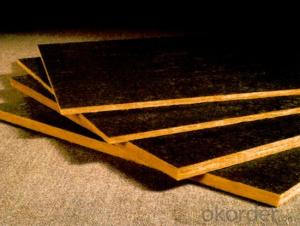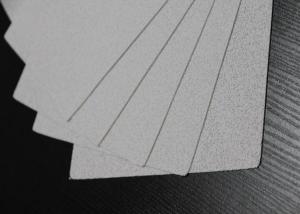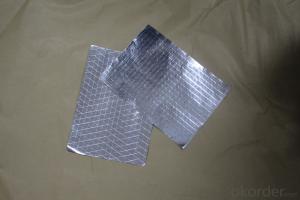E Glass Fiberglass Chopped Strand Mat with Fiberglass Facing
- Loading Port:
- China main port
- Payment Terms:
- TT OR LC
- Min Order Qty:
- 1000 kg
- Supply Capability:
- 1000000 kg/month
OKorder Service Pledge
OKorder Financial Service
You Might Also Like
E glass Fiberglass Chopped Strand Mat Factory
Introduction:
Fiberglass chopped strand mat is a non-woven E-or C-glassfiber mat, product manufactured by spreading continuous filament roving of 50mm in length randomly and uniformly in combination with polyester binder in powder form (or other binder in emulsion from). This product is characterized by good combination of resin, easy operation, good wet strength retention, good laminate transparency and low cost. It is suitable for the applications of hand lay-up FRP moldings, such as various sheets and panels, boat hulls, bath tubs, cooling towers, corrosion resistant, vehicles etc.
Function:
Fiberglass chopped strand mat is chopped using the "E" chopped glass and emulsion adhesive bond. It is suitable for hand lay and can enhance the unsaturaed ployester resins.
Technical Data:
| PRODUCT | TYPE | WEIGHT (G/M2) | WIDTH(MM) | ROLL WIEHGT (KG) | MOISTURE CONTENT(%) | BREAKAGE STRENGTH (N) | BINDER CONTENT(%) |
| EMC100 | E/C-GLASS | 100±30 | 200-3300 | 30-90 | < 0.2 | 170 | 8-13 |
| EMC150 | E/C-GLASS | 150±30 | 200-3300 | 30-90 | < 0.2 | 40 | 5-8 |
| EMC225 | E/C-GLASS | 225±30 | 200-3300 | 30-90 | < 0.2 | 60 | 4-7 |
| EMC300 | E/C-GLASS | 300±30 | 200-3300 | 30-90 | < 0.2 | 90 | 3-6 |
| EMC450 | E/C-GLASS | 450±30 | 200-3300 | 30-90 | < 0.2 | 120 | 2-5 |
| EMC600 | E/C-GLASS | 600±30 | 200-3300 | 30-90 | < 0.2 | 150 | 2-5 |
| EMC900 | E/C-GLASS | 900±30 | 200-3300 | 30-90 | < 0.2 | 180 | 2-5 |
Products Shows:
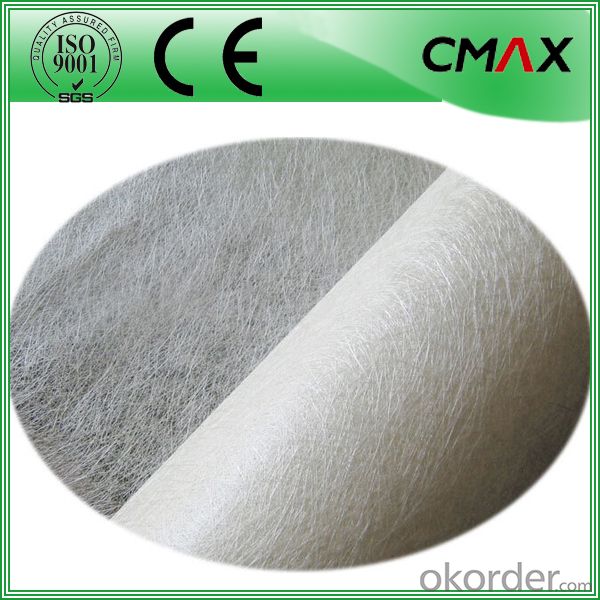
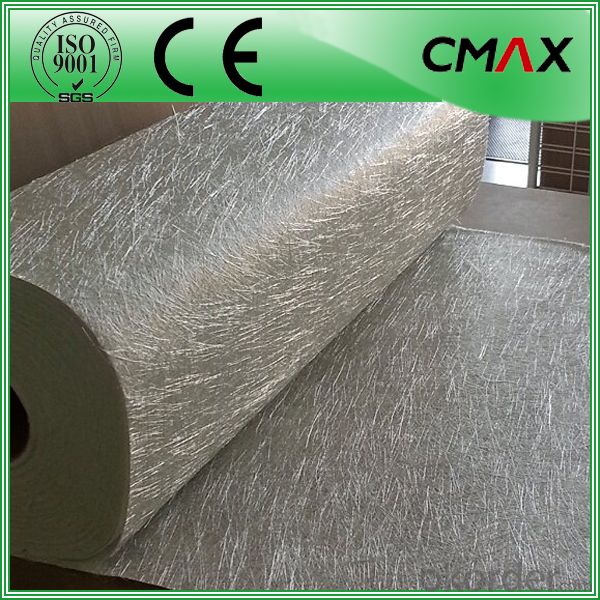
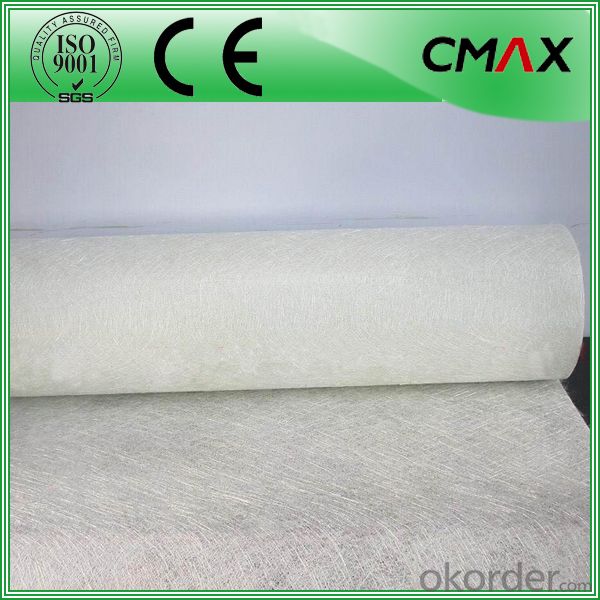
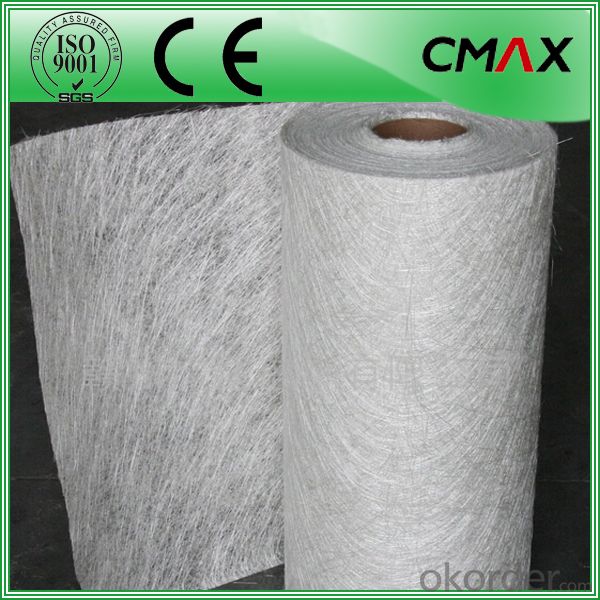
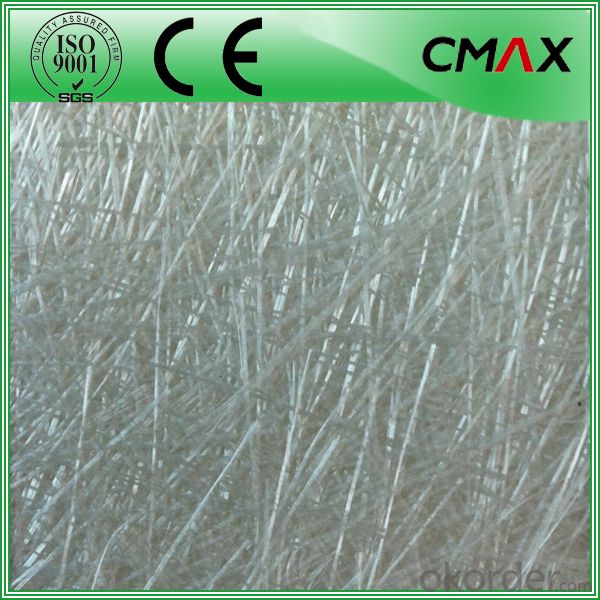
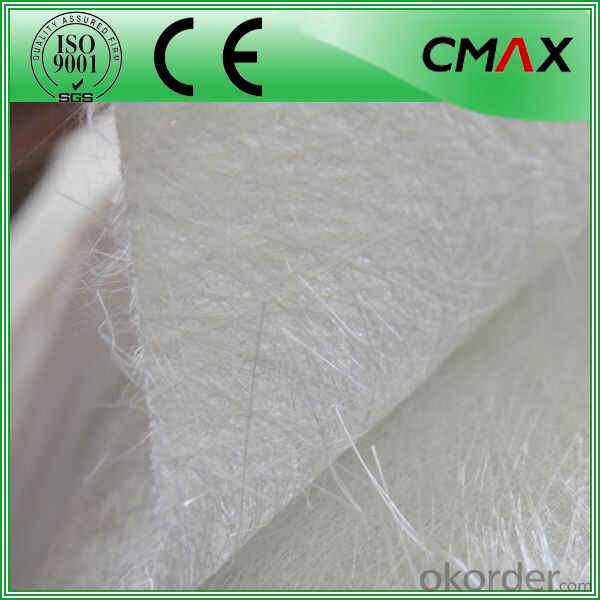
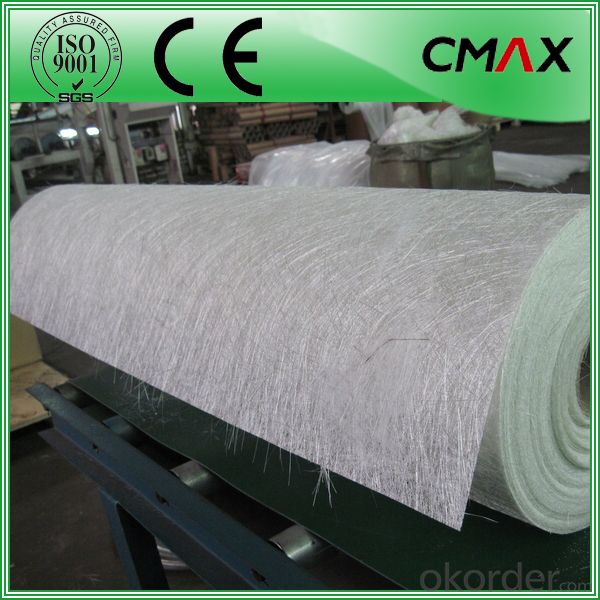
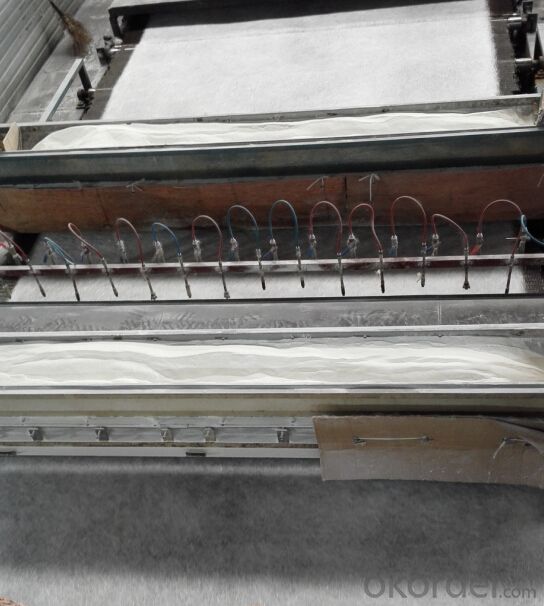
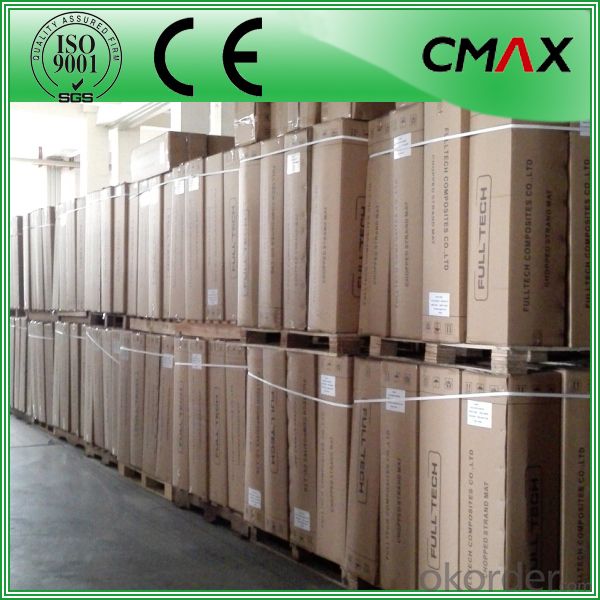
Certificates:
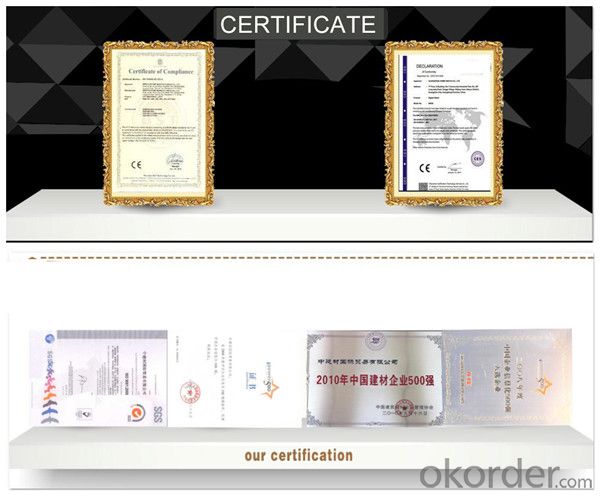
FAQ:
Is sample available ?
Yes, we provide the free samples, but customers themselves need pay the shipping fee
What's your MOQ?
Our MOQ is one 1*20' full container loading
How do you pack the fiberglass
(1) First, the mat is in roll packed in White PE fIlm.
(2) Then the rolls packed in the carton.
- Q: This question asks if there is any difference between black fiberglass tissues that are domestically produced and those that are imported.
- <p>Yes, there can be differences between domestic and imported black fiberglass tissues. These differences may include quality standards, manufacturing processes, material composition, and cost. Domestic products are often more readily available and may be subject to local regulations and standards, while imported products might have different certifications or comply with international standards. Additionally, the cost can vary due to factors like transportation, import duties, and market demand. It's important to consider the specific application and requirements when choosing between domestic and imported black fiberglass tissues.</p>
- Q: What is fiberglass facing?
- Fiberglass facing refers to a thin layer of fiberglass material that is used to cover or coat surfaces for various purposes. It is typically made up of tightly woven strands of glass fibers that are bound together with a resin or adhesive. This facing material is known for its strength, durability, and resistance to heat, moisture, and chemicals. It is commonly used in construction, insulation, and manufacturing industries for applications such as insulation boards, ductwork, wall panels, and composite materials. The fiberglass facing provides an additional protective layer, enhancing the structural integrity and performance of the materials it is applied to.
- Q: This question asks for advice on how to maintain the cleanliness and integrity of black fiberglass tissue.
- <p>To prevent your black fiberglass tissue from getting dirty or damaged, follow these tips: 1. Keep it covered when not in use to avoid dust and dirt accumulation. 2. Use a soft, damp cloth to gently clean the surface, avoiding harsh chemicals that could damage the material. 3. Store it in a cool, dry place away from direct sunlight to prevent fading or warping. 4. Handle the tissue with clean hands or use gloves to avoid transferring oils or dirt. 5. Regularly inspect for any signs of wear or damage and address them promptly to prevent further deterioration. By taking these precautions, you can prolong the life and maintain the appearance of your black fiberglass tissue.</p>
- Q: Is it possible to use black fiberglass tissue in the manufacturing of furniture?
- <p>Yes, black fiberglass tissue can be used for furniture manufacturing. It is known for its strength, durability, and resistance to various environmental conditions, making it suitable for creating sturdy and long-lasting furniture. Fiberglass is often used in outdoor furniture and certain types of modern indoor furniture due to its versatility and ability to be molded into various shapes. However, it's important to consider the aesthetic appeal and the specific requirements of the furniture design when choosing to use black fiberglass tissue.</p>
- Q: Is it possible to use black fiberglass tissue in the construction or decoration of furniture?
- <p>Yes, black fiberglass tissue can be used for furniture. It is known for its strength, durability, and resistance to corrosion, making it suitable for various applications in furniture design. Fiberglass is often used in outdoor furniture, such as patio sets, due to its weather-resistant properties. It can also be used in modern and contemporary furniture designs for its sleek, matte finish and ability to be molded into various shapes. However, it's important to ensure that the fiberglass is properly treated and finished to avoid any health or safety concerns related to its raw form.</p>
- Q: This question asks about the advantages of black fiberglass tissue in terms of environmental protection compared to other materials.
- <p>The use of black fiberglass tissue offers several environmental benefits. It is a lightweight material that can reduce the energy consumption required for transportation. Additionally, it has excellent thermal insulation properties, which can lead to energy savings in buildings and reduce greenhouse gas emissions. Black fiberglass tissue is also resistant to moisture and rot, reducing the need for replacement and disposal, thereby decreasing waste. Furthermore, it is made from glass, a material that can be recycled, contributing to a circular economy and reducing the environmental impact of material extraction and production.</p>
- Q: This question asks for guidance on selecting the appropriate type of black fiberglass tissue for a specific application.
- <p>To choose a suitable type of black fiberglass tissue for your application, consider the following factors: 1) Mechanical properties: Assess the required strength, flexibility, and durability. 2) Thermal resistance: Determine the temperature range your application will encounter. 3) Chemical resistance: Identify any chemicals the tissue will come into contact with and ensure compatibility. 4) Electrical properties: If electrical insulation is needed, check for dielectric strength and resistivity. 5) Optical properties: Black fiberglass may be used for light blocking or aesthetic purposes; consider the desired level of opacity. 6) Environmental conditions: Factor in exposure to moisture, UV radiation, or other environmental stressors. Consult product data sheets and manufacturer recommendations to find a material that meets these criteria for your specific application.</p>
- Q: This question asks about the proper storage methods for black fiberglass paper.
- <p>To store black fiberglass paper, follow these guidelines: Keep it in a cool, dry place away from direct sunlight and moisture. Ensure the storage area is well-ventilated to prevent the buildup of humidity. Store the paper on flat surfaces to avoid bending or creasing. Use protective coverings like plastic sheets to shield the paper from dust and contaminants. If stacking, do not overload as it may cause the bottom layers to compress and damage. Label the storage area clearly to indicate the contents and check regularly for any signs of deterioration.</p>
- Q: Is it possible to utilize black fiberglass tissue for the production of handkerchiefs?
- <p>Black fiberglass tissue is not typically used for handkerchiefs due to its rigid and non-absorbent nature. Handkerchiefs are usually made from soft, absorbent materials like cotton or linen to ensure comfort and functionality. Fiberglass, being a composite material with glass fibers embedded in a resin matrix, is more commonly used in construction, automotive, and aerospace industries for its strength and durability, rather than for textiles intended for personal use.</p>
- Q: What benefits does black fiberglass tissue offer compared to other types of tissues?
- <p>Black fiberglass tissues offer several advantages over other types. They have excellent resistance to high temperatures, making them suitable for use in high-heat environments. They also provide superior electrical insulation properties, which is crucial in electrical applications. Additionally, black fiberglass tissues are known for their chemical resistance, which protects against various chemicals that could degrade other materials. Their strength and durability make them ideal for applications requiring long-lasting performance. Lastly, the black color can provide a more aesthetically pleasing appearance in certain industrial settings.</p>
Send your message to us
E Glass Fiberglass Chopped Strand Mat with Fiberglass Facing
- Loading Port:
- China main port
- Payment Terms:
- TT OR LC
- Min Order Qty:
- 1000 kg
- Supply Capability:
- 1000000 kg/month
OKorder Service Pledge
OKorder Financial Service
Similar products
Hot products
Hot Searches
Related keywords
